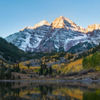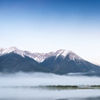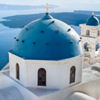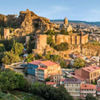
Exciting and diverse: discoveries in Tunis


Out and about in the medina
The medina of Tunis is one of the most beautiful and oldest medinas in North Africa. People have been living, working and trading in the narrow streets since the Middle Ages. There are lively souks lined with artisans in the backyards, traditional homes with colourful painted gates on impressive palaces and mosques. To unwind from the hustle and bustle of the Medina, you can sit down in one of the many traditional cafes and with an Arabian coffee or tea, listen to Malouf sounds, sometimes very traditional, sometimes modern, sometimes live.


Browsing and bartering: souks and markets
Tunis souks are colourful and loud, and their lively atmosphere extends over several alleys and quarters of the Medina. A new sensual experience awaits at every corner: fragrant spices and herbs, ceramics, jewellery, textiles and antiques. Don’t miss the “Souk El Attarine”, the perfumier at the Ez-Zitouna Mosque, selling fantastic scented oils. Another highlight is the “Souq des Chechias”, where the traditional red felt hats are manufactured and sold.

Religion and education: the Great Mosque
The Ez-Zitouna Mosque (Olive Tree Mosque) in the heart of the medina, also known as the “Large Mosque”, is one of Tunisia’s oldest and most important mosques. With its rich, imposing architecture with intricate tiles, carved stucco and hundreds of marble columns, it has been an important centre of Islamic education for centuries and housed one of the oldest universities in the world.


Magnificence and history at the Bardo Museum
Tunisian history and art merge in a fascinating way at the Bardo Museum. As one of the most popular attractions for culture vultures, the museum presents an impressive collection of Roman mosaics, some of the most beautiful in the world. In addition to these treasures, there are artefacts from the Punic, Islamic and early Christian era. The magnificent building itself, a former palace, is also worth seeing.


Luxury and Hammam at Dar El Jeld
The Dar El Jeld Hotel & Spa is a boutique hotel ideally located in the heart of the city. Guests can stay in sixteen luxuriously appointed suites surrounded by a peaceful garden with fragrant lemon trees. In the elegant spa area, you can be pampered in the traditional hammam. To see out the day, we recommend dinner on the roof terrace – with a view overlooking the city.

Heritage and Contemporary: Avenue Habib Bourguiba
Habib Bourguiba was Tunisia’s first president after independence in 1956. Today, many monuments and places in Tunis are reminiscent of its legacy, including the famous Avenue Habib Bourguiba, a bustling street in the New Town of Tunis. The street is lined with trees and there are terraces where you can enjoy an espresso – perhaps one of the best places to experience the modern Tunis.


Colonial architecture: Cathedral of Saint Vincent de Paul & Saint Olive
Situated on the bustling Place de l’Indépendance, opposite the French Embassy, lies the Cathedral of Saint Vincent de Paul & Saint Olive, a Catholic cathedral dating back to 1883. It is an impressive example of colonial architecture in Tunisia, combining Gothic, Byzantine and Moorish elements. This blend gives a fascinating insight into Tunisia’s multicultural history.


The pride of ancient times: the ruins of Carthage
In ancient times, Tunis was always in the shadow of Carthage’s wealthy wholesale and trading power, just 15 kilometres away on the Gulf of Tunis. Only after the repeated destruction of Carthage in the Punic Wars with Rome (146 BC) did Tunis become of national importance. The ancient ruins are a UNESCO World Heritage Site and are considered a historical highlight. Make sure you take enough time for this exciting expedition into the past.

Charming: the artisan village of Sidi Bou Saïd
Sidi Bou Saïd is a picturesque artisan village rising on a hill overlooking the Gulf of Tunis, just a short drive from Tunis. Renowned for its signature white and blue houses, Moorish architecture and stunning views, it offers a perfect blend of history and charm. In particular, Sidi Bou Saïd’s vibrant art markets and cosy cafes make it a truly worthwhile destination for a trip.
Header - Photo by MouhamedNourdine on stock.adobe.com
Paragraph 1 - Photo by TravelWorld on stock.adobe.com
Paragraph 1 - Photo by lizavetta on stock.adobe.com
Paragraph 2 - Photo by Alex Cimbal on Shutterstock
Paragraph 2 - Photo by adisa on stock.adobe.com
Paragraph 3 - Photo by amnat30 on Shutterstock
Paragraph 4 - Photo by posztos on Shutterstock
Paragraph 4 - Photo by Vladimir Voronin on stock.adobe.com
Paragraph 5 - Photo by Dar El Jeld Hotel & Spa
Paragraph 5 - Photo by Dar El Jeld Hotel & Spa
Paragraph 6 - Photo by Gordon Sinclair on Alamy Stock Photo
Paragraph 7 - Photo by Prisma by Dukas Presseagentur GmbH on Alamy Stock Photo
Paragraph 7 - Photo by jackie ellis on Alamy Stock Photo
Paragraph 8 - Photo by tingra on Getty Images
Paragraph 8 - Photo by JackF on stock.adobe.com
Paragraph 9 – Photo by derejeb on stock.adobe.com








